
Gardening is both a labor-intensive task and one that you can’t let yourself get too far behind with, yet it is a very rewarding activity to devote your time to. There’s no better feeling than sitting down for the first homegrown meal of the year, and actually getting to reap the rewards of all your hard work and many battles faced along the way.
Other than the weather being your number one threat, the second biggest threat to your garden is pests destroying your crop. Not all pests are bad for your garden, and many such as lady bugs and praying mantises are actually there to help you and get rid of the problem insects for you. The most important tip to staying ahead of the pests damaging your crop, is to catch the problem early-on before it gets too infested; however, this is not always possible. As can be seen below, this is the damage that hornworms can do to a crop – this occurred to some of my tobacco plants in less than 48 hours. The same can happen to tomatoes and many other similar types of plants from these pests as well.
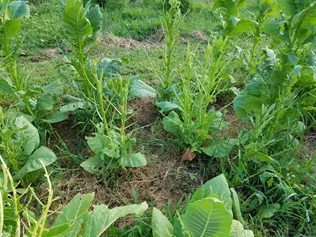
In regards to hornworms – if you ever find a hornworm with eggs attached to it, LEAVE THAT HORNWORM ALONE and let him live. Those are actually eggs laid by Braconid-Wasps, which lay parasitic eggs on the hornworms and once hatched attack and eat their larvae. These wasps are the number one way to defend against these pests, and will significantly reduce the hornworm populations in your garden. Once the eggs are laid, these parasitic eggs feed off the hornworms and the hornworms slow down significantly, and eventually stop eating and moving altogether. The second-best method of control for these are handpicking them off and killing them.
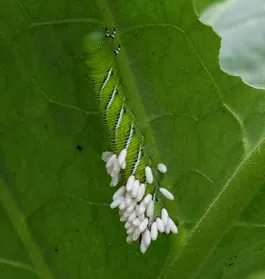
Most insecticides that you buy at the store are extremely toxic man-made chemicals and stay in your soil for extended amounts of time. Not to mention that you’re spraying this on something that you plan on eating too. Some people are OK with this, but I avoid chemical insecticides at all costs, and also save lots of money in the process as a result.
My favorite insecticide is one that you can grow at home. Seeds are cheap, growing is relatively easy, and it is also one of the more common ingredients found in organic pesticides (yet many people do not know this) – that plant is tobacco. Contrary to popular belief, most places in the US have no regulations in place that prevent people from growing tobacco for personal use. The only times you need licenses to grow it is when you plan on doing it commercially. You can purchase several hundred tobacco seeds for just a few bucks, and they only take about a couple months to be ready for harvest. They also are a visually stunning plant (especially when in bloom) to add to your garden and deter deer as well.
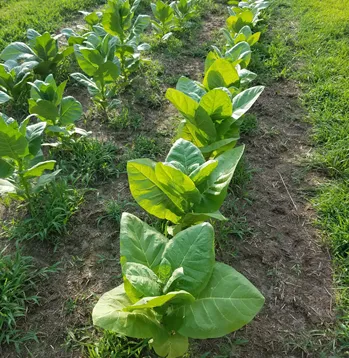
Creating your tobacco-based insecticide is extremely straightforward and easy, and stores for several weeks in a cool and dark place. If you choose to not grow your own tobacco, you can purchase some from a smoke shop for extremely cheap. Look for non-scented pipe tobacco – you can purchase a pound of this for around $10.
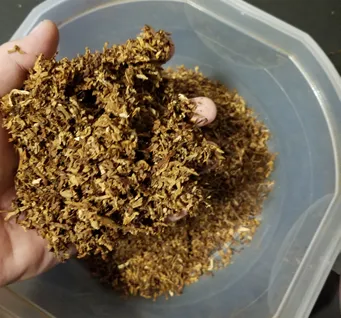
You’re going to take approximately 1 cup of dried tobacco and 1 gallon of water to make this mixture. You can adjust the ratios some if you’d like to change the concentration, but I wouldn’t try going too overboard on the mixture. You’re going to want to place this mixture either in a warm room or outside in the sun for a little while prior to use. Let the mixture then soak anywhere from 3 to 24 hours, with the longer you let it steep, the more potent the mixture will become.
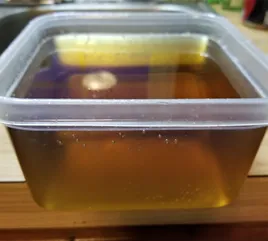
Once you’re satisfied with the mixture, strain the tobacco out and squeeze the remaining liquid out of the tobacco as well. For best results, add about 2 tablespoons of regular unscented Dawn dish soap, as this will help the solution stick to the plants and bugs better than if you do not; however; the Dawn is not required, but definitely recommended. And don’t worry about the Dawn – you’ve got nothing to worry about with spraying this on your plants. (Remember them using Dawn to help all the animals in the BP oil spill?) Now you’ve got your very own homegrown insecticide, and a very effective one at that!
Now take your mixture and pour it in a spray bottle, and head on out to the battlefield. It’s best to use this as a point control product. When I say point control, I mean to only spray in locations where you have infestations. While you can spray it on non-infested plants, it’s better not to since it can hurt other beneficial bugs such as lady bugs. This mixture is effective on a variety of bugs, but is most effective on soft-bodied pests such as aphids, slugs, spider mites, etc. Spray your mixture directly onto the bugs you see along with surrounding leaves. Also, be sure to thoroughly spray the bottom of the leaves too, as this is where a majority of these bugs hide at and lay their eggs. The mixture will also destroy their larvae and many of their eggs as well. After initial application, retreat after day 3 and day 7 to ensure that you got everything. After this, continue to monitor as you would normally do.

The only types of plants that you want to avoid with this mixture is other plants that are in the tobacco family, as it might pass tobacco mosaic virus to those plants and cause much more harm than the pests would. The most common plants in this family (that are found in a garden) are tomatoes and peppers.
Now that you’ve got this new tool to add to your toolbelt, I know you will be very satisfied with the results once you try it. Not only do you now not have to worry about insects destroying all of your hard work, but you also have the peace of mind knowing that you not feeding your family harsh man-made chemicals with your fried squash and collard greens.
If there’s enough interest in this, let me know in the comments, and I can do a writeup in the near future on how to actually grow you own tobacco. Feel free to ask any other questions you have about this, and hope you enjoyed!